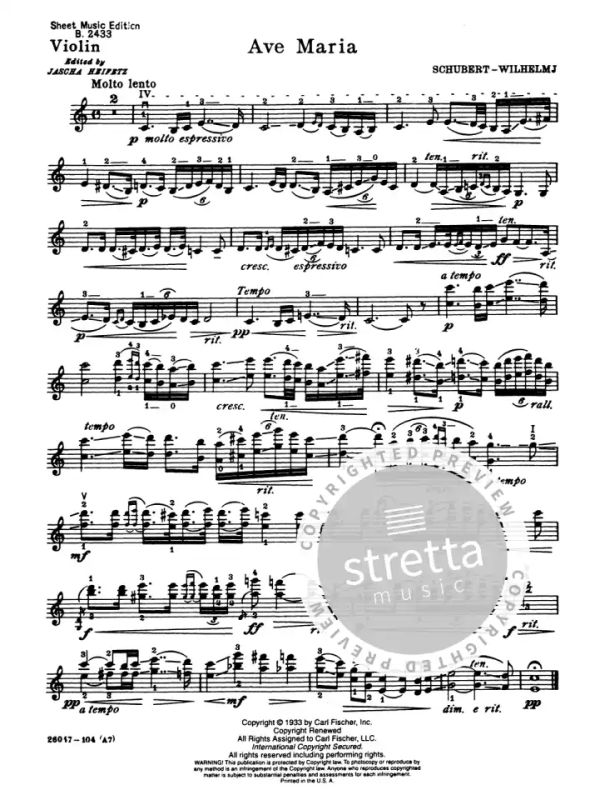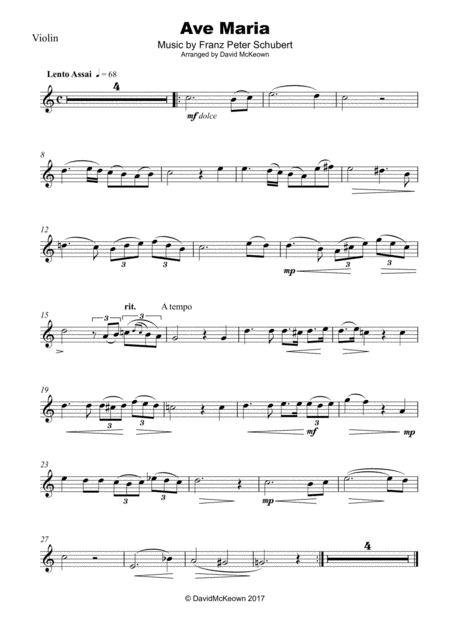
The original lyric is sung to Virgin Mary for help and guidance. Schubert's "Ave Maria," originally titled "Ellens Gesang III," is sung when Ellen is in the woods praying to the Virgin Mary for help and is overheard by Roderick Dhu as he heads off to battle. Ellen Douglas, the daughter, seeks shelter with Roderick Dhu in his castle on Loch Katrine with her exiled father.

The epic was published in 1810 and tells the story of the conflict between King James V and the clan Douglas, resulting in the king banishing the clan from his reign. The piece also features as a recurring theme during Disney's A Christmas Carol.Often used as a prelude or processional piece, Schubert's "Ave Maria" is one of seven songs composed for his setting of Sir Walter Scott's epic Lady of the Lake. Noa (Achinoam Nini) performed her own lyrics for "Ave Maria" for Pope John Paul II at the Vatican in 1994 He added a tempo marking, Moderato, pedal markings for the pianist, and dynamic markings.Īlessandro Moreschi, one of the last castrato singers, performed "Ave Maria" and several other pieces on recordings for the Gramophone & Typewriter Company in the early 1900s.Ī rendition by Yo-Yo Ma and Bobby McFerrin was used as the main theme in the 2017 Palme d'Or winning Swedish film The Square. To this measure, the voice has a repeated expressive "Maria!". He used Bach's composition, in the version with an inserted measure after the original 22, the so-called Schwencke-measure which was common at the time.


He used the first four measure for a prelude, repeating them for the first entry of the voice. Gounod based the work on Bach's prelude, which is a study in harmony in broken chords. Problems playing these files? See media help. Later in his career, Gounod composed an unrelated setting of Ave Maria for a four-part SATB choir. Opera singers, such as Nellie Melba, Franco Corelli and Luciano Pavarotti, as well as choirs have recorded it hundreds of times during the twentieth century. There are many different instrumental arrangements including for violin and guitar, string quartet, piano solo, cello, and even trombones. Īlongside Schubert's " Ave Maria", the Bach/Gounod "Ave Maria" has become a fixture at funerals, wedding Masses, and quinceañeras. The version of Bach's prelude used by Gounod includes the "Schwencke measure" (m.23), a measure allegedly added by Christian Friedrich Gottlieb Schwencke in an attempt to correct what he or someone else erroneously deemed a "faulty" progression, even though this sort of progression was standard in Bach's music. In 1859, Jacques-Léopold Heugel published a version with the familiar Latin text.

The same year it appeared with the words of Alphonse de Lamartine's poem Le livre de la vie ("The Book of Life"). Gounod improvised the melody, and his future father-in-law Pierre-Joseph-Guillaume Zimmermann transcribed the improvisation and in 1853 made an arrangement for violin (or cello) with piano and harmonium. The 1853 publication has French text, but it is the 1859 version with the Latin Ave Maria which became popular. 1 in C major, BWV 846, from Book I of his The Well-Tempered Clavier, 1722. The piece consists of a melody by the French Romantic composer Charles Gounod that he superimposed over an only very slightly changed version of Bach's Prelude No. " Ave Maria" is a popular and much-recorded setting of the Latin prayer Ave Maria, originally published in 1853 as " Méditation sur le Premier Prélude de Piano de S.


 0 kommentar(er)
0 kommentar(er)
